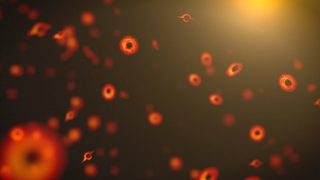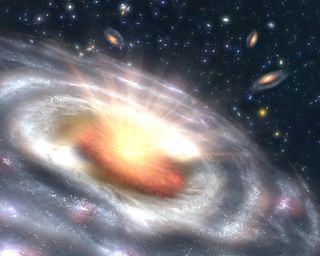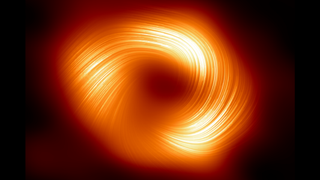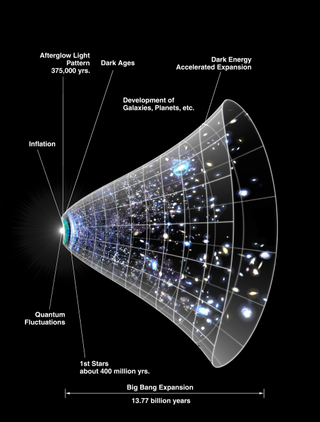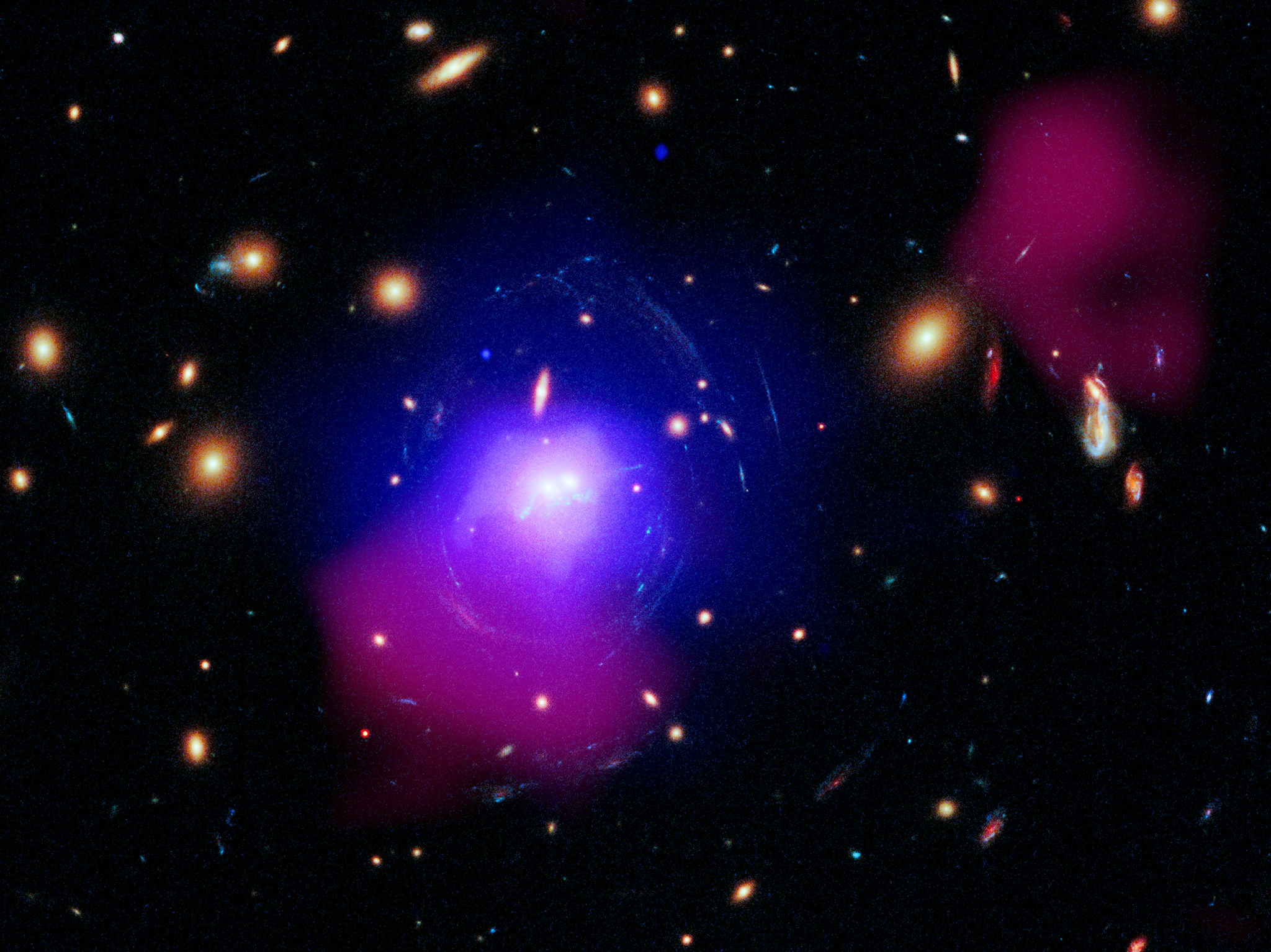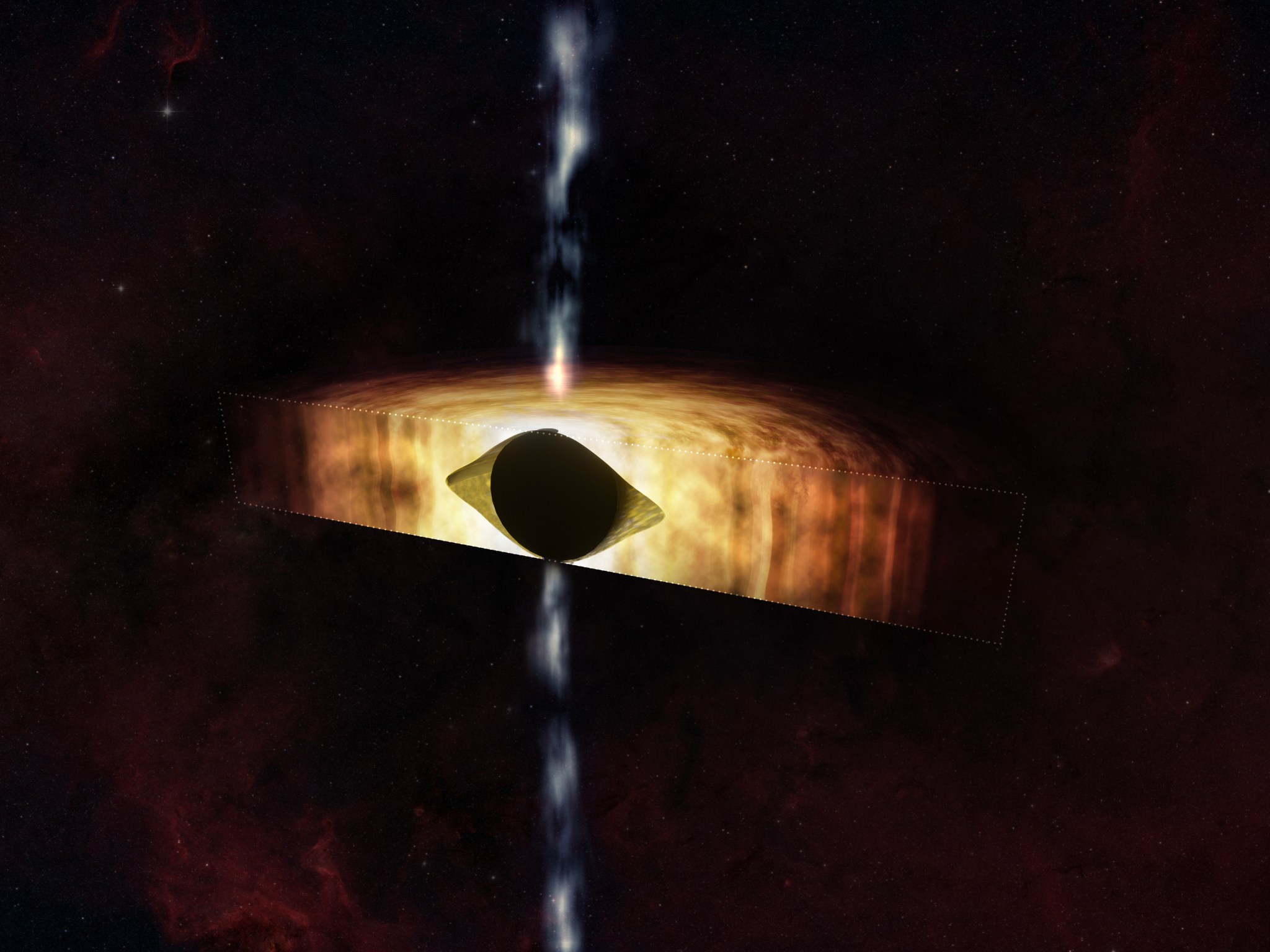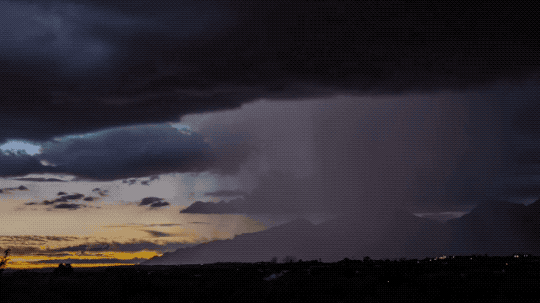Black hole week is in full swing, and to celebrate, NASA has explained how its next major astronomical instrument, the Nancy Grace Roman Space Telescope, will hunt for tiny black holes that date back to the Big Bang. When we think of black holes, we tend to picture vast cosmic monsters like stellar-mass black holes with masses tens to hundreds of times that of the sun. We may even picture supermassive black holes with masses millions (or even billions) of times that of the sun sitting at the hearts of…
Read MoreTag: Black Holes
James Webb Space Telescope suggests supermassive black holes grew from heavy cosmic ‘seeds’
The James Webb Space Telescope (JWST) has observed light from stars surrounding some of the earlier supermassive black holes in the universe — black holes seen as they were less than a billion years after the Big Bang. The observations conducted by a team from the Massachusetts Institute of Technology (MIT) addresses the question of how these cosmic titans that sit at the hearts of galaxies grew to tremendous masses, equivalent to millions (sometimes even billions) of suns. More specifically, how did they grow so rapidly? The findings could also…
Read MoreScientists use AI to reconstruct energetic flare blasted from Milky Way’s supermassive black hole
Scientists have used artificial intelligence to construct a three-dimensional model of an energetic outburst, or flare, that occurred around the Milky Way’s central black hole, Sagittarius A* (Sgr A*). This 3D model could help scientists develop a clearer picture of the tumultuous environment that forms around supermassive black holes in general. The material swirling around Sgr A* exists in a flattened structure called an “accretion disk” that can periodically flare. These flares occur across a range of light wavelengths, all the way from high-energy X-rays to low-energy infrared light and…
Read MoreTiny black holes left over from the Big Bang may be prime dark matter suspects
When it comes to primordial black holes being dark matter suspects, their alibi may be falling apart. Tiny black holes, created seconds after the birth of the universe, may survive longer than expected, reigniting a suspicion that primordial black holes could account for dark matter, the universe’s most mysterious stuff. Dark matter currently represents one of the most pressing problems in physics. That is because, despite making up an estimated 85% of the matter in the cosmos, dark matter remains effectively invisible to our eyes because it doesn’t interact with…
Read MoreSupermassive black hole’s mysterious hiccups’ likely caused by neighboring black hole’s ‘punches’
A hiccuping supermassive black hole has alerted astronomers to a whole new type of black hole behavior. In 2020, a previously quiet black hole at the heart of a galaxy about 800 million light-years from Earth, and with a mass equivalent to 50 million suns, suddenly erupted, brightening the material around it by a factor of 1,000. A team of researchers thinks that these periodic eruptions are caused by a second, smaller black hole slamming into a disk of gas and dust, or “accretion disk,” surrounding the supermassive black hole, causing…
Read MoreThis iPhone app can find the Milky Way’s monster black hole from anywhere
A new iPhone app allows you to find the center of the Milky Way simply by using your smartphone — and it was made with ChatGPT. The free app, called Galactic Compass, was developed by Matthew Webb and released on the Apple App Store on Feb. 15. It’s designed to always point users in the direction of the Galactic Center, no matter Earth’s position in the cosmos. Webb’s inspiration for the app stems from years of teaching himself to always know where to look for the Galactic Center, which shifts…
Read MoreHeaviest pair of black holes ever seen weighs 28 billion times more than the sun
Two supermassive black holes found in collision-created “fossil galaxies” are so massive that they refuse to collide and merge. The discovery could explain why, although supermassive black hole mergers are predicted theoretically, they have never been observed in progress. The supermassive black hole system is located in elliptical galaxy B2 0402+379. Together, the two black holes have a joint mass that is 28 billion times larger than that of the sun, making this the most massive black hole binary ever seen. Not only that, but the binary components of this…
Read MoreStellar Beads on a String
Galaxy cluster SDSS J1531+3414 X-ray: NASA/CXC/SAO/O. Omoruyi et al.; Optical: NASA/ESA/STScI/G. Tremblay et al.; Radio: ASTRON/LOFAR; Image Processing: NASA/CXC/SAO/N. Wolk Astronomers have discovered one of the most powerful eruptions from a black hole ever recorded in the system known as SDSS J1531+3414 (SDSS J1531 for short). As explained in our press release, this mega-explosion billions of years ago may help explain the formation of a striking pattern of star clusters around two massive galaxies, resembling “beads on a string.” SDSS J1531 is a massive galaxy cluster containing hundreds of individual galaxies and huge reservoirs of hot gas and dark…
Read MoreTelescopes Show the Milky Way’s Black Hole is Ready for a Kick
NASA/CXC/M.Weiss This artist’s illustration depicts the findings of a new study about the supermassive black hole at the center of our galaxy called Sagittarius A* (abbreviated as Sgr A*). As reported in our latest press release, this result found that Sgr A* is spinning so quickly that it is warping spacetime — that is, time and the three dimensions of space — so that it can look more like a football. These results were made with NASA’s Chandra X-ray Observatory and the NSF’s Karl G. Jansky Very Large Array (VLA). A team of researchers applied a new…
Read MoreWhat’s Made in a Thunderstorm and Faster Than Lightning? Gamma Rays!
3 min read What’s Made in a Thunderstorm and Faster Than Lightning? Gamma Rays! A flash of lightning. A roll of thunder. These are normal stormy sights and sounds. But sometimes, up above the clouds, stranger things happen. Our Fermi Gamma-ray Space Telescope has spotted bursts of gamma rays – some of the highest-energy forms of light in the universe – coming from thunderstorms. Gamma rays are usually found coming from objects with crazy extreme physics like neutron stars and black holes. So why is Fermi seeing them come from thunderstorms? About a thousand times a…
Read More